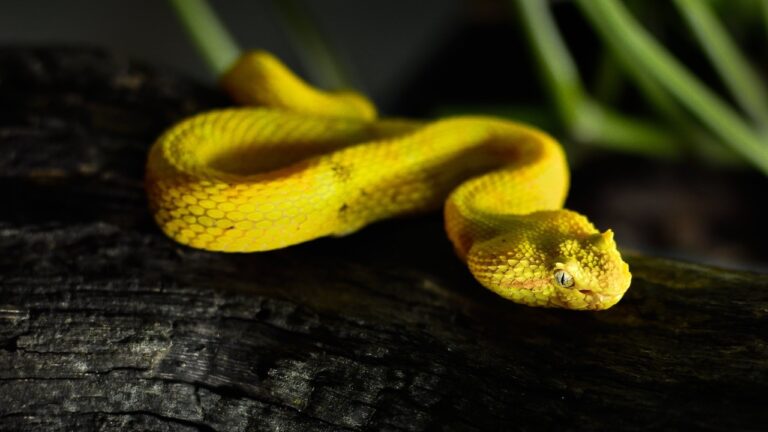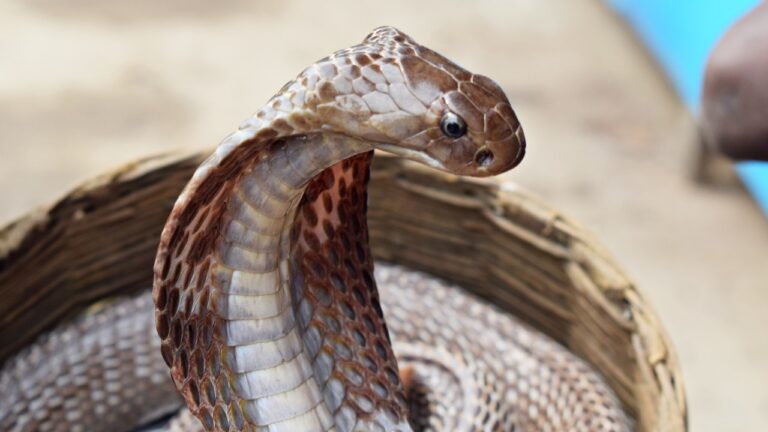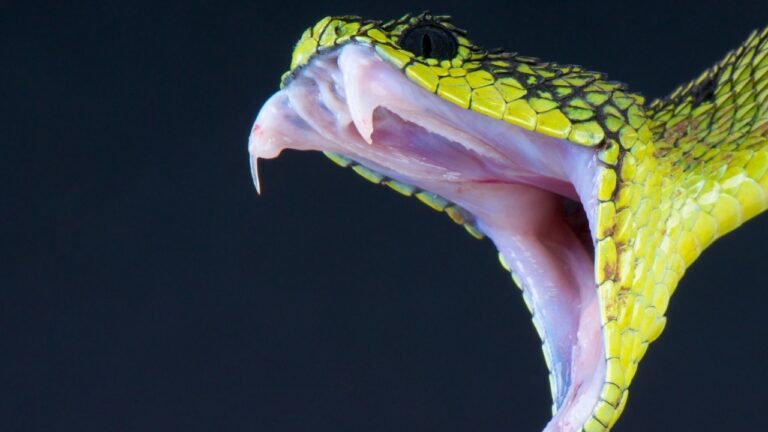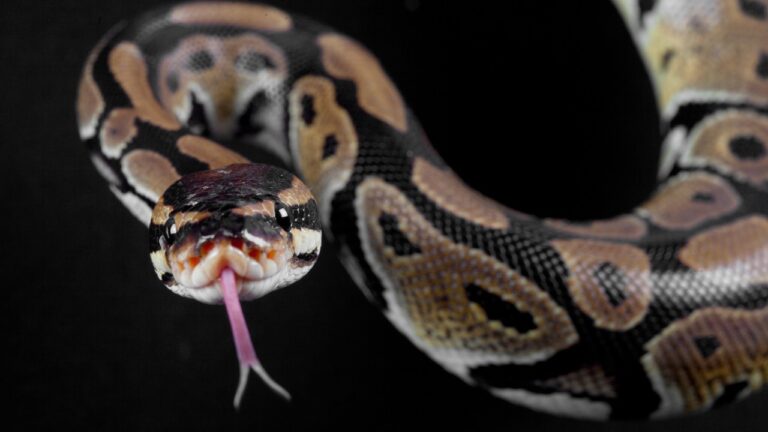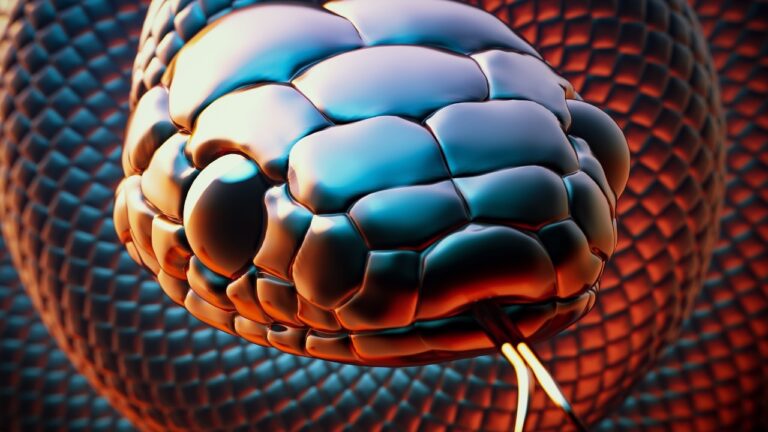Snake Shedding Problems: A Guide to Specialized Health Conditions
Importance of proper shedding for snakes
In the fascinating world of snakes, shedding is a natural and vital process that plays a crucial role in their overall health and well-being. Proper shedding allows snakes to grow, rejuvenate, and maintain their sleek and vibrant appearance. It is a remarkable sight to witness, as a snake sheds its old skin, revealing a fresh and vibrant new exterior that glistens in the sunlight.
Shedding serves several important purposes for snakes. Firstly, it enables them to replace damaged or worn-out skin. Snakes are constantly exposed to various elements in their environment, such as rough surfaces, debris, and parasites. Through shedding, they can rid themselves of any external irritants or potential infections that may have accumulated on their old skin.
Moreover, shedding also promotes growth. As snakes shed their skin, they are able to accommodate their increasing size. It allows their bodies to expand and adapt to their changing needs. Without proper shedding, snakes may encounter difficulties in movement and experience discomfort, hindering their overall development.
Additionally, shedding contributes to a snake’s appearance. A fresh shed leaves a snake’s scales looking vibrant, glossy, and intact. It enhances their natural patterns and colors, making them even more captivating to observe. A snake that sheds regularly exhibits a healthy and thriving existence.
It is crucial for snake owners and enthusiasts to understand the significance of proper shedding and the potential problems that can arise if it is compromised. By gaining insight into the shedding process and the common issues that can arise, snake owners can take proactive measures to ensure their reptilian companions remain in optimal health.
In the following sections, we will delve deeper into the shedding process, explore the causes of shedding problems, discuss how to identify these issues, and provide valuable tips for prevention and treatment. By equipping ourselves with knowledge and understanding, we can ensure that our scaly friends thrive and flourish in their unique world. So, let’s embark on this shedding journey together and unravel the secrets of snake health and wellness.
Understanding Snake Shedding
Snakes, fascinating creatures with their sleek bodies and mesmerizing patterns, undergo a unique process called shedding. Shedding, also known as ecdysis, is a natural phenomenon where snakes discard their old skin and replace it with a fresh, vibrant one. This process is essential for their growth, health, and overall well-being, making it crucial for snake owners to understand and monitor.
The Shedding Process
When a snake begins the shedding process, its skin becomes dull and its eyes turn opaque or cloudy. This is a result of a fluid buildup between the old and new skin layers. As the snake prepares to shed, it becomes more reclusive and may exhibit a decreased appetite. During this time, the snake’s body secretes a substance that separates the old skin from the new one.
Once the shedding process is ready to commence, the snake will rub its head against rough surfaces, such as rocks or branches, to loosen the old skin around its mouth. The snake then continues to slither out of its old skin, starting from its head and progressing towards its tail. This sloughing off of the old skin allows the snake to reveal its vibrant colors and patterns, while also accommodating its growth.
Common Shedding Problems
While shedding is a natural and necessary process for snakes, it is not always smooth sailing. Snakes can encounter various shedding problems that may hinder the shedding process or pose potential health risks. It is crucial for snake owners to be aware of these issues in order to promptly address them and ensure the well-being of their scaly companions.
One common shedding problem is retained eye caps, where the snake fails to shed the protective covering over its eyes. This can lead to vision impairment or discomfort. Another issue is incomplete shedding, where portions of the old skin remain attached to the snake’s body, particularly around the tail or head area. In severe cases, this can constrict blood flow and lead to tissue damage.
A more serious shedding problem is dysecdysis, which refers to abnormal or difficult shedding. This can occur due to underlying health issues, such as inadequate humidity levels, nutritional deficiencies, skin infections, parasites, or stress. Dysecdysis can be a symptom of more significant health conditions, including snake scale rot, snake mouth rot, snake mites, snake inclusion body disease, snake respiratory infections, snake septicemia, snake prolapse, snake kidney disease, or snake neurological disorders.
By understanding the shedding process and being aware of common shedding problems, snake owners can take proactive measures to prevent and address these issues. In the next section, we will explore the causes of snake shedding problems and discuss effective prevention and treatment strategies.
Continue reading: Causes of Snake Shedding Problems
Causes of Snake Shedding Problems
Inadequate Humidity Levels
One of the primary causes of snake shedding problems is inadequate humidity levels in their environment. Snakes, being ectothermic creatures, rely on their surroundings to regulate their body temperature. The humidity level plays a crucial role in facilitating a smooth shedding process for these scaly creatures.
When the humidity levels are too low, it can lead to a variety of shedding issues. Insufficient humidity can cause the snake’s skin to become dry and rigid, making it difficult for them to shed properly. This can result in retained eye caps, where the old skin fails to peel away from the eyes, posing a risk to the snake’s vision and overall health.
To prevent inadequate humidity levels, snake owners should carefully monitor and maintain the appropriate humidity range for their specific snake species. Providing a suitable habitat with a humidity gradient and using moisture-retaining substrates can help create an environment conducive to successful shedding.
Nutritional Deficiencies
Another factor that can contribute to shedding problems in snakes is nutritional deficiencies. A balanced diet is essential for snakes to maintain optimal health and promote regular shedding. When snakes do not receive adequate nutrition, their body may not have the necessary resources to produce healthy skin cells, resulting in irregular or incomplete shedding.
Proper nutrition for snakes includes a well-balanced diet that meets their specific dietary requirements. Different snake species have varying dietary needs, which may include a combination of live or frozen-thawed rodents, insects, or even small birds. Consultation with a reptile veterinarian or herpetologist can provide valuable guidance on developing a suitable feeding plan for your snake.
Skin Infections
Skin infections can also interfere with the shedding process in snakes. Bacterial, fungal, or parasitic infections can cause inflammation and damage to the skin, making it difficult for the old skin to slough off naturally. Common skin infections in snakes include snake scale rot and snake infectious stomatitis.
Snake scale rot, also known as dermatitis, is a condition where the skin becomes infected and starts to deteriorate. This can result from poor husbandry practices, such as improper substrate or unclean living conditions. On the other hand, snake infectious stomatitis, commonly referred to as mouth rot, affects the oral cavity and can spread to the surrounding skin.
To prevent skin infections, it is crucial to maintain a clean and hygienic habitat for your snake. Regularly cleaning the enclosure, providing appropriate substrates, and ensuring proper ventilation can help minimize the risk of skin infections. If you suspect your snake has a skin infection, seeking veterinary care promptly is essential to prevent further complications.
Parasites
Parasites are another potential cause of shedding problems in snakes. Internal and external parasites, such as mites and ticks, can infest a snake’s skin and disrupt the shedding process. These tiny pests can cause irritation, inflammation, and discomfort for the snake, leading to difficulties in shedding.
If left untreated, snake mites can multiply rapidly and pose a significant threat to a snake’s health. They feed on the snake’s blood and can weaken the immune system, making the snake more susceptible to other infections and diseases. Additionally, heavy infestations of mites can cause anemia and contribute to shedding problems.
Regularly inspecting your snake for signs of parasites, such as excessive scratching, small dark specks on the skin, or visible parasites themselves, is crucial. If you notice any signs of parasitic infestation, it is important to seek snake mites treatment from a qualified reptile veterinarian to effectively eliminate the parasites and restore your snake’s health.
Stress
Stress can have a significant impact on a snake’s overall well-being, including their shedding process. Snakes are sensitive creatures that can experience stress from various factors, such as improper handling, sudden environmental changes, or overcrowded living conditions. When snakes are stressed, it can disrupt their normal physiological functions, including shedding.
Stress can lead to a condition called dysecdysis, where the snake experiences difficulty in shedding their skin properly. This can result in retained patches of old skin, which can be uncomfortable and even painful for the snake. Long-term stress can also weaken the immune system, making the snake more susceptible to infections and shedding complications.
To minimize stress in snakes, it is essential to provide them with a suitable and enriching environment. This includes providing hiding places, maintaining a consistent temperature gradient, and handling them with care and gentleness. Creating a stress-free environment for your snake will not only promote healthy shedding but also contribute to their overall well-being.
Understanding the causes of snake shedding problems is crucial for snake owners to provide optimal care for their scaly companions. By addressing these underlying factors, such as maintaining proper humidity levels, ensuring a balanced diet, preventing skin infections, controlling parasites, and minimizing stress, snake owners can help their snakes achieve smooth and successful sheds. Remember, a healthy snake with healthy skin is a happy snake!
Identifying Snake Shedding Problems
When it comes to the health of your scaly friend, identifying potential shedding problems is crucial. By recognizing these issues early on, you can provide the necessary care and prevent further complications. In this section, we will discuss three common snake shedding problems: retained eye caps, incomplete shedding, and dysecdysis.
Retained Eye Caps:
One of the most common shedding problems experienced by snakes is the retention of eye caps. During the shedding process, a snake’s eye caps, or the transparent covering over their eyes, should naturally come off. However, in some cases, the eye caps may not be shed completely, leading to retention.
When a snake has retained eye caps, it can cause discomfort and even impair their vision. As a responsible owner, it is crucial to regularly inspect your snake’s eyes after each shedding to ensure that the eye caps have been shed properly. If you notice any remnants of the eye caps stuck on the snake’s eyes, it is important to address this issue promptly.
Incomplete Shedding:
Another shedding problem that snakes may encounter is incomplete shedding. This occurs when a snake is unable to shed its entire skin in one piece. Incomplete shedding can be caused by various factors, such as insufficient humidity levels or health issues.
To identify incomplete shedding, look for patches of old skin that remain attached to your snake’s body. These remnants can be found primarily around the eyes, mouth, and tail. In severe cases, incomplete shedding can lead to constricted circulation and tissue damage. Therefore, it is crucial to address this issue promptly to prevent any further complications.
Dysecdysis:
Dysecdysis, also known as abnormal shedding, is a more serious shedding problem that can occur in snakes. It refers to the failure of a snake to shed its skin properly. Dysecdysis can be caused by various underlying health conditions, including skin infections, parasites, or nutritional deficiencies.
To identify dysecdysis, look for signs such as stuck skin, scabs, or sores on your snake’s body. Additionally, if you notice that your snake’s shedding cycle has become irregular or prolonged, it may be a sign of dysecdysis. It is essential to address this issue promptly as it can lead to further complications if left untreated.
In the next section, we will explore preventative measures and treatment options for snake shedding problems. It’s important to remember that while some shedding issues can be resolved at home, others may require veterinary intervention. By staying vigilant and proactive, you can ensure the well-being and comfort of your scaly companion.
Continue reading: Prevention and Treatment
Prevention and Treatment
Maintaining Proper Humidity Levels
One of the key factors in preventing and treating snake shedding problems is maintaining proper humidity levels. Snakes require specific humidity levels in their environment to facilitate the shedding process. Humidity refers to the amount of moisture in the air, and it plays a crucial role in ensuring that a snake’s skin sheds properly.
To maintain optimal humidity levels, it is essential to provide a suitable enclosure that can retain moisture. This can be achieved by using a reptile-specific humidity gauge to monitor and regulate the humidity levels. Misting the enclosure with water can help increase the humidity, especially during shedding periods. Additionally, using a humidity box, which is a small enclosed space with damp substrate, can provide the snake with a higher humidity environment when needed.
Providing a Suitable Environment
Creating a suitable environment for your snake is paramount in preventing shedding problems. This includes ensuring that the enclosure is properly sized for the snake, with enough space for it to move around comfortably. Providing hiding spots and climbing branches can also help reduce stress and promote natural behaviors.
Furthermore, it’s important to maintain cleanliness in the enclosure. Regularly cleaning the enclosure and removing any soiled substrate or waste can help prevent bacterial or fungal growth that could lead to skin infections. Disinfecting the enclosure periodically can also help eliminate any potential pathogens.
Regular Health Checks
Regular health checks are essential for identifying and addressing any potential shedding problems early on. Observation is key in noticing any abnormalities in your snake’s shedding patterns or overall behavior. Keeping a shedding log can be useful in tracking shedding frequency and identifying any irregularities.
Additionally, examining your snake’s skin after shedding can help identify any retained eye caps or incomplete shedding. If you notice any stuck shed or abnormalities, it’s important to address them promptly to prevent further complications.
Dietary Considerations
Proper nutrition plays a vital role in a snake’s overall health and shedding ability. Providing a balanced diet that meets the specific nutritional needs of your snake is crucial. This includes offering a variety of appropriate prey items and ensuring that they are properly sized for your snake.
In some cases, dietary deficiencies can contribute to shedding problems. It’s important to consult with a reptile veterinarian or herpetologist to determine if any nutritional supplements or modifications are necessary to address specific deficiencies.
Seeking Veterinary Care
While prevention is key, sometimes shedding problems can become more complex or require professional intervention. If you have tried the aforementioned prevention and treatment methods and your snake continues to experience shedding difficulties, it’s essential to seek veterinary care.
A reptile veterinarian with expertise in snake health can provide a thorough examination and diagnose any underlying health conditions that may be contributing to the shedding problems. They may recommend specific treatments or therapies depending on the diagnosis. Early intervention is crucial in preventing potential complications such as snake scale rot, snake mouth rot, or other serious conditions like snake inclusion body disease or snake respiratory infection.
Remember, your snake’s health and well-being should always be a top priority. By maintaining proper humidity levels, providing a suitable environment, conducting regular health checks, ensuring a balanced diet, and seeking veterinary care when necessary, you can help prevent and treat shedding problems in your beloved reptile companion.
Internal links: snake scale rot, snake mouth rot, snake mites treatment, snake inclusion body disease, snake respiratory infection.
Conclusion
In conclusion, proper shedding is crucial for the overall health and well-being of snakes. It is a natural process that allows them to grow and renew their skin. However, there are various shedding problems that can arise, leading to potential health issues for these reptiles.
By understanding the shedding process and the common problems that can occur, snake owners can take proactive measures to prevent and address these issues. Inadequate humidity levels, nutritional deficiencies, skin infections, parasites, and stress are all factors that can contribute to shedding problems.
Identifying shedding problems such as retained eye caps, incomplete shedding, and dysecdysis is essential for early intervention. These issues can cause discomfort and potentially lead to more severe complications if left untreated.
Prevention and treatment strategies play a crucial role in maintaining the health of snakes. Maintaining proper humidity levels, providing a suitable environment, conducting regular health checks, and considering dietary needs are all important aspects of snake care. Additionally, seeking veterinary care is vital for diagnosing and treating any underlying health conditions that may be contributing to shedding problems.
In summary, snake shedding problems should not be overlooked or dismissed. They can indicate underlying health issues that require attention and intervention. By being proactive and implementing appropriate care practices, snake owners can ensure the well-being and longevity of their scaly companions.
For more information on specific health conditions that may affect snakes, such as snake scale rot or snake respiratory infection, please visit serpentsuppers.com for detailed resources and treatment options.


